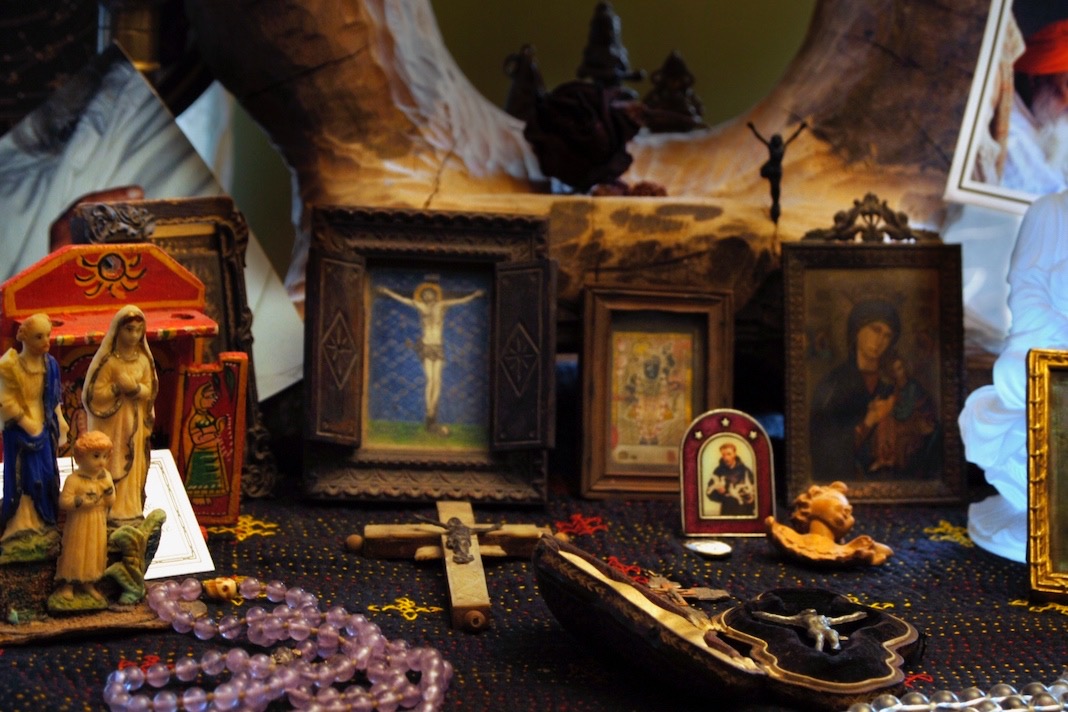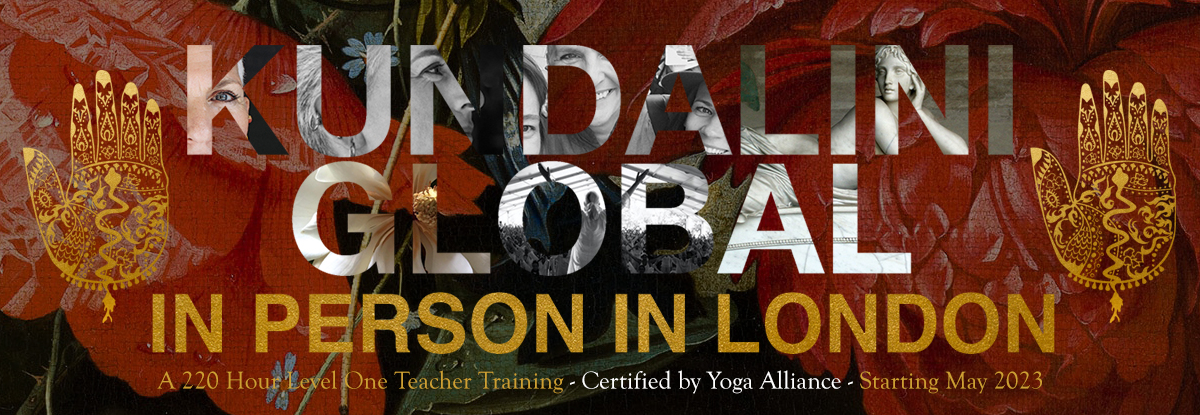The Kundalini Global Level one teacher training invites trainee teachers to reflect deeply on how they can be radically inclusive in their approach, exploring how to create safe spaces, excellent classes, and facilitate new experiences of the self, for everyone.

Yoga has the power to create change, not only for those who feel at ease walking into a shiny yoga studio, but for those for whom there is a curiosity but hesitancy, for whom there are (both visible and invisible) barriers to access what yoga has to offer.
The training works to create teachers who can hold classes safe enough for those who may feel they would be uncomfortable, unwelcome or othered in the space they imagine a yoga classroom to be. This is a huge, ongoing, piece of work, for every teacher. It is work that is continued beyond the training, through supervision, self-reflection and through a commitment we make as teachers to be open-minded in our reflective practise.
“A profound experience…”
As a teacher I am aware that I have people who come to my classes that are Muslim, Christian, people who are agnostic, atheist… and yet they can each access, through the way that I approach teaching, a very profound experience of a relationship to the Divine, in whatever form they believe it to be.
In Kundalini Global we recognise that in all religious and spiritual practise there are some extraordinary rituals, ceremonies and practices that can help us access a much deeper relationship to our purpose… perhaps to reframe what has happened to us in our lives.
For a Kundalini Global trainee, the invitation is to develop a deep understanding of, and respect for, all religious and spiritual belief systems. This is part of a commitment to holding awareness of the barriers to access and what we may be able to do to include a wider demographic of people in our classes.
Yoga is Political
Yoga is political. And this is something teachers, new and experienced, all hold. On one hand we hold the contention that surrounds Western practise of yoga, and our role within that. We need to understand the huge amount of cultural appropriation of yoga in the West and consider our responsibility to be conscious and aware of this and hold respect and reverence for Hindu traditions and the historical roots of yoga. We need to consider our position relative to the co-opting of images, symbols, scripture… we need to look around at the commodification of the practise and we need to reflect, always, on the part we play in upholding that. Or choosing not to.
On the other hand, to open yoga up to all religious and spiritual belief systems, we need to be educated and aware of where the barriers are for those from a huge array of backgrounds.
Considering this one may think that the easiest path would be for Kundalini Global to divest itself of anything that could be construed as spiritual or religious. But that, really and truly, is not our way. Yoga’s presence on gym timetables as exercise, where practitioners often feel no sense of sacredness or connection at all, but take it on as a physical practise to build strength and flexibility, is far from what we hope to create in our classes.
‘The Kundalini is The Ability to Actually Be Divine’
Whilst the training goes deeply into anatomy, physiology and more pragmatic aspects of what yoga does to the body and mind, what we work toward is creating classes where anyone who comes can explore their own relationship to an internal Divine. We invite an exploration of finding immanence within the self. What does that mean? How does that feel? What transforms in our lives when we can find this space within ourselves?
Depending on someone’s religious and spiritual background, belief systems and life experience, the Divine within can be, mean, be thought of, in a huge number of ways.
And, no doubt, for some, it is a contentious idea…
For those with a monotheistic religious belief system, the concept of an internal Divine and/or any explicitly religious element of Hinduism, Buddhism or Jainism, taught within class, can be an issue. Some may feel that they want to explore yoga relative to fostering or deepening their connection to their existing religious practise but hit resistance, either within or outside of themselves. What is said about yoga, in the media and by select religious leaders, can add to hesitancy.
A few years ago, a pastor in Missouri, USA, named John Lindell, told his enormous congregation of over 10,000 Christians, that yoga opens Christians to “demonic” oppression. We regularly see headlines about the Church’s view on yoga, such as when a teacher was told she could not hire a hall to teach classes as yoga was not “compatible with Christian faith”.
In 2008, a council of Malaysian Muslim clerics issued a fatwa against yoga, declaring it haram, or forbidden by Islamic law. This followed similar edicts in Egypt and Singapore. The decision in Malaysia caused controversy and the then Prime Minister, Abdullah Ahmad Badawi backtracked somewhat, speaking to journalists a short time later he stated that Muslims could carry on doing yoga, minus any chanting.
Yoga for everyone?
Such headlines that spring up around this issue can compound that sense that yoga is not for everyone. But we believe it can be, and that it needn’t be turned into an entirely secular practise for that to be so.
One of the first graduates of the Kundalini Global teacher training, John Russell, is a priest in the Church of England who teaches Kundalini Global as a fun, playful and accessible spiritual practice that helps people towards a place of stillness and safety in which a transformative encounter with the Divine becomes more possible. We are proud that teachers like John are out there with this open-minded and inclusive view of what our practise can offer to all.
For all teachers, holding awareness of the issues that those who with a monotheistic religious belief system is one way in which we can explore making classes safe and accessible to a wider demographic of people. As stated earlier in this post, this is not a small piece of work to take on: yoga as a sacred practise and inner exploration of the self that is accessible to all religious and spiritual belief systems… but we work to create that.
On the training…
We start, on the training, with the education and understanding of religion. From there we may look at how we can be respectful, inclusive, and open-minded when it comes to music, mantra, prayer, and in how we present ourselves. Beyond that, it is supervision, self-reflection, paying attention… who is coming to our classes? Where are classes becoming exclusive? What can we do to create change?
How an individual teacher takes this challenge on is not prescribed by the training, but the aim, always, is to foster the self-reflection necessary to keep expanding outward who can find solace in the spaces we hold and the classes we offer. If you want to find out more about the Kundalini Global teacher training head over to the Kundalini Global website:








